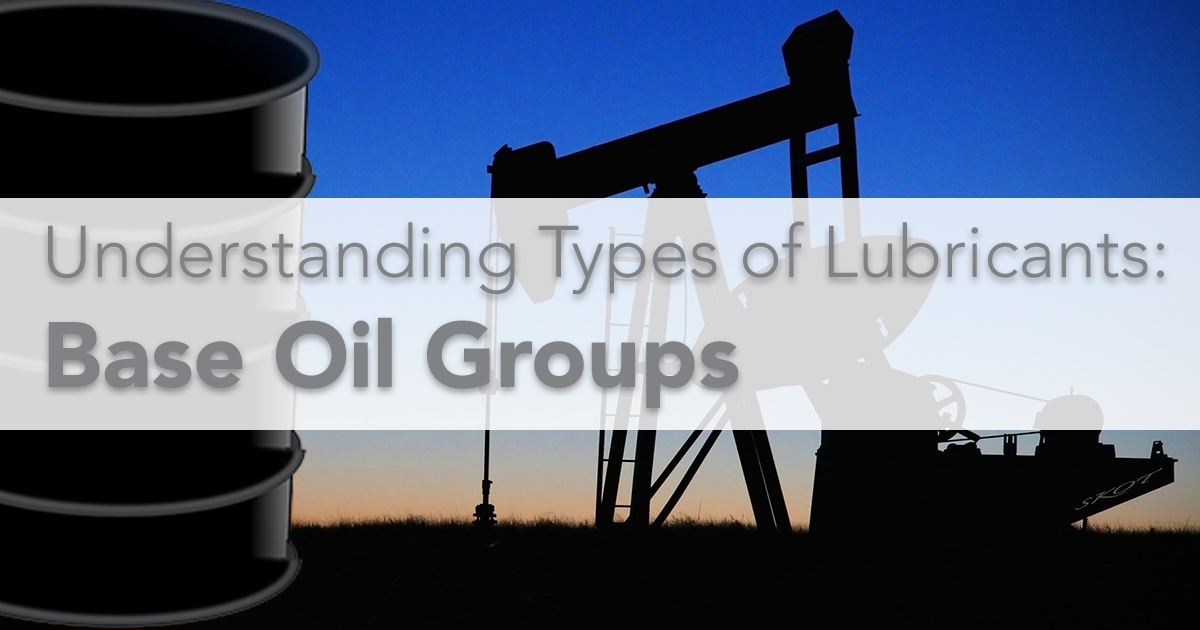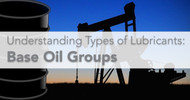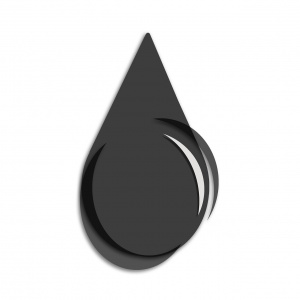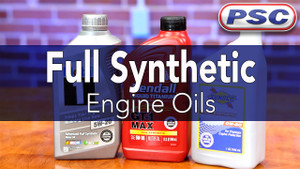Understanding Types of Lubricants: Base Oil Groups
By on Jan 18 2017

Lubricants are primarily used to reduce the friction between two surfaces in mutual contact; in reducing friction, they also help reduce the heat generated when the surfaces move.
Friction is an important force that prevents everything from constantly moving. Still, it has its time and its place, and preventing the components of your automotive engine from moving is definitely not the time nor the place (especially when you're already running late to work and temperatures are below freezing).
Lubricants are the magical substances that allow us to work against friction in favor of productivity. A good lubricant may also be able to transmit force, transport foreign particles, or heat or cool surfaces.
They are most commonly found in industrial applications (our specialty) but are also used for a variety of purposes. Other common uses include cooking (think non-stick spray), bio-medical applications on humans (like lubricants for prosthetic limbs), ultrasound exams, medical exams, and personal lubricants. In all these situations, the goal is to reduce friction.
Properties of a good lube
Not all lubes are created equal; And different applications will require different lube characteristics. I mean, you can't expect Chevron DELO grease and petroleum jelly to have the exact same properties
However, a good lubricant (especially those in the industrial sector) will generally possess the following characteristics:
- High boiling point & low freezing point
- High viscosity index
- Thermal stability
- Hydraulic stability
- Demulsibility (ability to release water)
- Corrosion prevention
- High resistance to oxidation
What's in a lubricant?
For any given lubricating oil, the simple recipe is a base oil + additives.
The only difference between fluids and grease is that the latter has an extra thickener: up to 30% of grease is made up of thickener (a simple or complex soap).
It's all about that base
All lubricants start with a base oil. Typically, the ratio is somewhere around 90% base oil + 10% additives.
There are three types of base oils: mineral, vegetable, and synthetic. Mineral oil comes from crude oil and the quality depends on the refining process. Lubes made from vegetable oils are called biolubricants. Synthetic oils are man-made fluids and can be beneficial for use in extreme conditions. Lubricants for use with the human body can be oil-, water-, or silicone-based.
Besides grease, other non-liquid lubricants include powders, PTFE tape, and air cushion, among others.
...with a little something extra
Additives are used to impart specific characteristics to any given oil-based lubricant. Naturally, these additives will vary across the differing types and uses of lubricants.
These are a few of the common types of additives:
- Antioxidants
- Detergents
- Anti-wear
- Rust/corrosion inhibitors
- Extreme pressure
- Anti-foaming agents
- Viscosity index improvers
- And others
Base Oil Groups
Almost all industrial lubricants now come from base oils.
The American Petroleum Institute (API) has 5 base oil designations. The first three groups are derived from crude oil (mineral oil); Group IV base oils are fully synthetic; Group V is for all other base oils not included in Groups I through IV.
Group I
These base oils are less than 90% saturates, more than 0.03% sulfur and have an SAE viscosity index range of 80 to 120. Operating temperature range is from 32 to 150 F. These oils are solvent-refined, which is a simpler refining process, making these the cheapest base oils on the market
Group II
Group II base oils are defined as containing more than 90% saturates, less than 0.03% sulfur, and have a V.I. of 80 to 120. These base oils are often manufactured by hydrocracking, which is a more complex process than solvent-refining. These oils have better antioxidation properties and have a clearer color than Group I base oils.
Group III
These base oils are greater than 90% saturates, less than 0.03% sulfur, and have a viscosity index above 120. Group III base oils are more refined than Group II and are typically severely hydrocracked (greater pressure and heat); this process produces a purer base oil.
Group IV
These base oils are called polyalphaolefins (PAOs). They are synthetic and made through a process called synthesizing. PAOs have a broader temperature range and are great for use in applications exposed to extreme cold and/or high heat.
Group V
All other base oils that do not fall in the other groups are classified as Group V. Examples include silicone, phosphate ester, polyalkylene glycol (PAG), polyolester, and biolubes. These base oils can be mixed with other base stocks to enhance the oil's properties.
These oils can be further classified into these categories, depending on composition: paraffinic, naphthenic, aromatic.
When it comes to choosing a base oil, it's important to make sure it's appropriate for your application; before you select a lubricant, make sure it can handle the temperature range and operating conditions for which it will be used.
Since proper lubrication is integral to properly maintain your equipment, make sure you adhere to the specifications provided by the manufacturer.
Want to learn more about the different types of lubricants we carry? Check out our category information videos here.
Have any questions regarding lubrication? Feel free to contact us!
For Further Reading:
http://www.machinerylubrication.com/Read/28766/wha...







